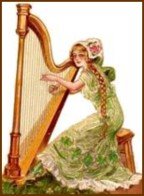
Hello from the Hovel...Another post this week, yes I’m back. Hope you’ve all had a good day. I’d made plans last night to do more de-cluttering today but just couldn’t get motivated. Will do so tomorrow!!!...So why am I here today? Well today is a day of Remembrance....

August 23rd is known for a day of Remembrance for two important events in history....
1/ The European Day of Remembrance for Victims of Stalinism and Nazism (known as the International Black Ribbon Day)....
23 August was designated by the European Parliament in 2008/2009 to coincide with the date of the signing of the Molotov-Ribbentrop Pact as in 1939. European Day of Remembrance was designated as "a Europe-wide Day of Remembrance for the victims of all totalitarian and authoritarian regimes, to be commemorated with dignity and impartiality"....
 Soviet dictator Joseph Stalin and German foreign minister Joachim von Ribbentrop 1939
Soviet dictator Joseph Stalin and German foreign minister Joachim von Ribbentrop 1939It was on August 23 1939 that the Moltov-Ribbenttop Pact was signed between Soviet dictator Joseph Stalin and German foreign minister Joachim von Ribbentrop. In 2010 European Parliament's President Jerzy Buzek described this event as "the collusion of the two worst forms of totalitarianism in the history of humanity."....
 Deportation from Warsaw Ghetto Uprising
Deportation from Warsaw Ghetto UprisingThe purpose of the Day of Remembrance is to preserve the memory of the victims of mass deportations and exterminations, while promoting democratic values with the aim of reinforcing peace and stability in Europe ~ Wikipedia ~
2/ International Day for the Remembrance of the Slave Trade and its Abolition....
August 23 was designated by UNESCO to memorialize the transatlantic slave trade. The date is significant because, during the night of August 22 to August 23, 1791 on the island of Saint Domingue (now known as Haiti), an uprising began which set forth events which were a major factor in the abolition of the transatlantic slave trade. ~ Wikipedia ~....
In addition to English colonists importing slaves to the North American colonies, by the 18th century, traders began to import slaves from Africa, India and East Asia (where they were trading) to London and Edinburgh to work as personal servants....
In 1783, an anti-slavery movement began among the British public. That year a group of Quakers founded the first British abolitionist organization....
On 17 June 1783, Sir Cecil Wray (Member of Parliament for Westminster) presented the Quaker petition to parliament....

The Official Medallion of the British Anti-Slavery Society designed by Josiah Wedgwood (1730-1795)
 William Wilberforce (1759–1833), politician and philanthropist
William Wilberforce (1759–1833), politician and philanthropistWilliam Joseph Wilberforce, a British politician was a leader of the movement. He headed the parliamentary campaign against the British slave trade for twenty-six years until the passage of the Slave Trade Act of 1807
Hugh Elliot was a noted abolitionist. Whilst Governor in the British West Indies, he was reported to be the driving force behind the arrest, trial and execution of a wealthy white planter Arthur Hodge for the murder of a slave....
Africans also played an important part in the abolition movement....
 Ignatius Sancho (c1729–1780)
Ignatius Sancho (c1729–1780)Ignatius Sancho gained fame in his time as "the extraordinary Negro". To 18th-century British abolitionists, he became a symbol of the humanity of Africans and immorality of the slave trade....
 Olaudah Equiano (c1745–1797)
Olaudah Equiano (c1745–1797)Olaudah Equiano was one of the most prominent Africans involved in the British debate for the abolition of the slave trade....
 "To the Friends of Negro Emancipation", an engraving in the West Indies, celebrating the abolition of slavery in the British Empire in 1833....
"To the Friends of Negro Emancipation", an engraving in the West Indies, celebrating the abolition of slavery in the British Empire in 1833....Britain abolished slavery throughout the British Empire with the Slavery Abolition Act 1833....
 "The Anti-Slavery Society Convention, 1840" by Benjamin Haydon
"The Anti-Slavery Society Convention, 1840" by Benjamin Haydon This monumental painting records the 1840 convention of the British and Foreign Anti-Slavery Society which was established to promote worldwide abolition....
 International Slavery Museum, Liverpool, England 2007
International Slavery Museum, Liverpool, England 2007There is the International Slavery Museum in Liverpool England which is concerned specifically with the Atlantic Slave Trade, rather than the history of slavery in other regions and eras....
I wish freedom and peace to all....














































